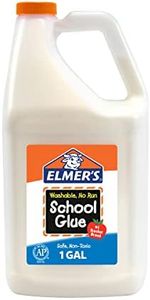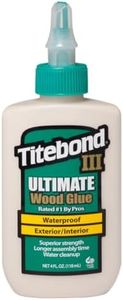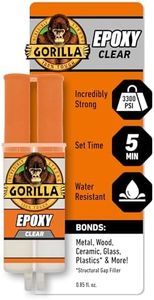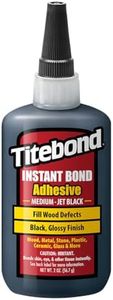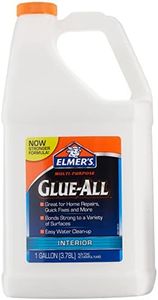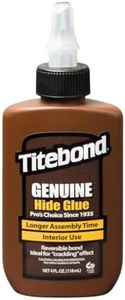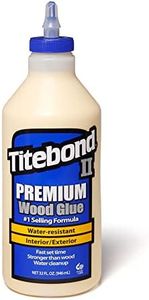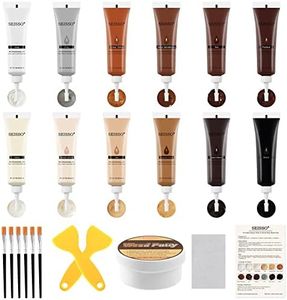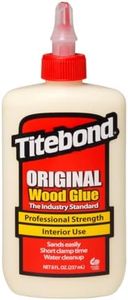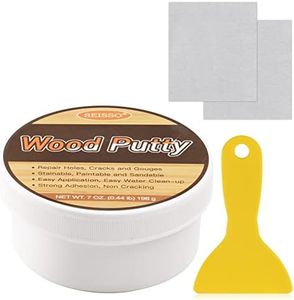We Use CookiesWe use cookies to enhance the security, performance,
functionality and for analytical and promotional activities. By continuing to browse this site you
are agreeing to our privacy policy
10 Best Wood Glue For Furniture Repair
From leading brands and best sellers available on the web.Buying Guide for the Best Wood Glue For Furniture Repair
When choosing a wood glue for furniture repair, it's important to focus on both strength and application. Furniture takes a lot of daily wear and tear, so having the right kind of wood glue ensures long-lasting repairs. The wood glue you pick should match your project’s needs, including wood type, location of the repair (indoor or outdoor), and how soon you want to use the furniture after fixing it. By understanding some core features, you can make the best choice for a durable and easy repair.Bond StrengthBond strength refers to how well the glue holds two pieces of wood together. This is vital for furniture, which often experiences stress from weight or movement. Wood glues are usually categorized as standard strength or high strength. Standard strength glues are good for light-duty fixes like drawers or decorative trim, while high-strength glues are necessary for joints that bear weight or get frequent use, such as chairs or tabletops. To pick the right one, think about how much strain the repaired part will undergo—a heavily used joint requires a glue with strong bonding power.
Type of AdhesiveThere are different types of wood glue, such as PVA (polyvinyl acetate) glue, polyurethane glue, and hide glue. PVA is the most common choice for basic indoor repairs due to its ease of use, clear drying, and good strength. Polyurethane glue is waterproof and suitable for both indoor and outdoor repairs but expands as it cures, which might not always be desired. Hide glue is often used for antiques and is reversible for future repairs. Your choice should be guided by where the furniture will be kept, and how much flexibility you need for future fixes.
Drying TimeDrying or curing time means how quickly the glue sets and reaches full strength. Fast-drying glues are convenient when you need a quick fix, while slower-drying glues may offer more time to adjust the position of parts before the glue hardens. Drying times can range from a few minutes to several hours. If you are repairing something complex and want to have time to align parts, go for a slower-drying glue. For quick simple fixes, fast-drying glues work best.
Water ResistanceWater resistance determines if the glue will hold up if exposed to moisture or spills. Ordinary wood glue is fine for indoor, dry locations. For furniture in damp areas or outdoor use, you'll want a glue labeled as water-resistant or waterproof. To decide, consider where your furniture lives—something in a kitchen, bathroom, or outside needs a glue that can withstand moisture.
Application MethodApplication method refers to how easy it is to use and spread the glue. Some glues come with easy-squeeze bottles or brush-on applicators, while others require you to use your own brush or spreader. If you’re doing delicate, detailed repairs, look for glue with a fine-tip applicator. For larger surfaces, a bottle with a wide tip or brush might be more convenient. Choosing the right applicator can help make your repair neater and more efficient.
Color When DryThis means what color the glue becomes once it cures. Some glues dry clear, some dry yellow, and others can match wood tones. Clear-drying glue is ideal when you don’t want the repair to be visible, such as for visible joints or light woods. For darker woods or where the joint won’t be seen, color may be less important. Think about how visible the repair area is and choose accordingly for the best cosmetic result.


